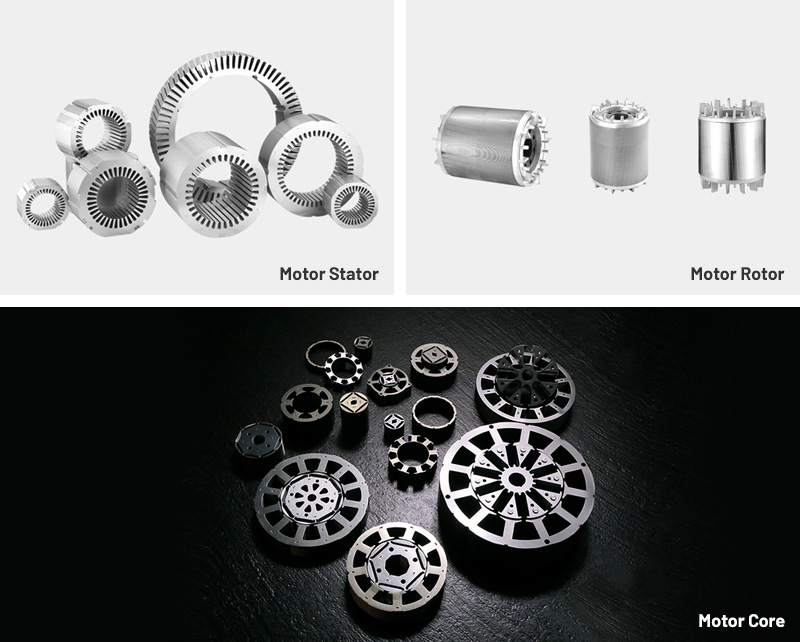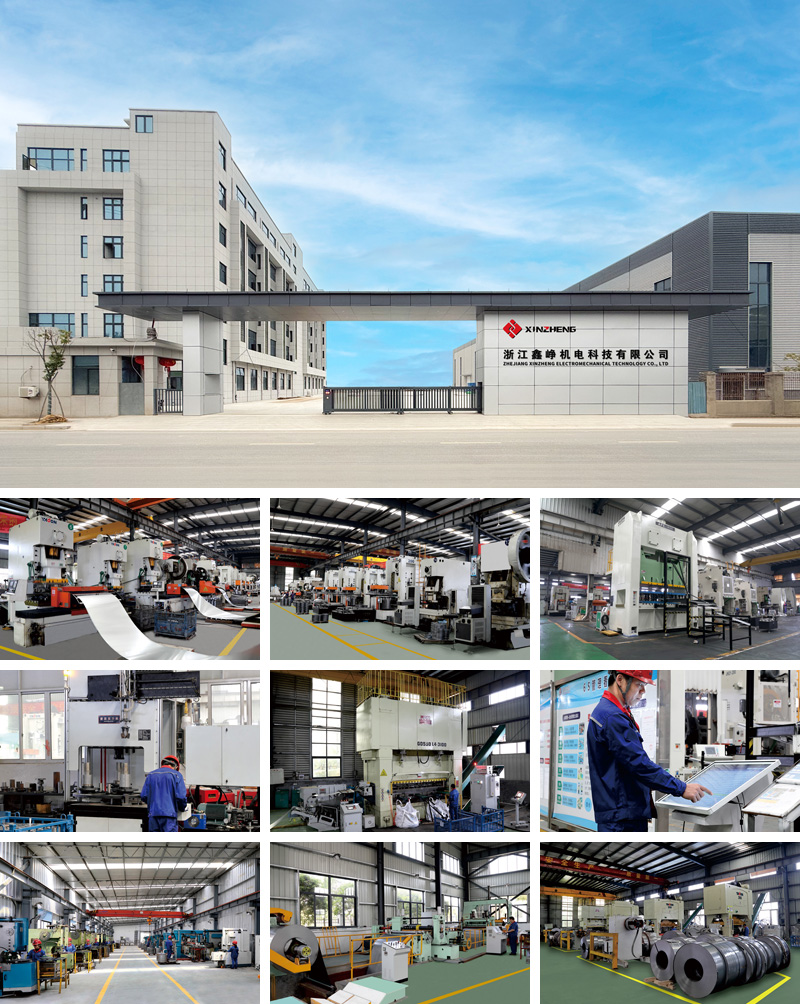High-speed electric motors are increasingly critical across industries such as aerospace, automotive, robotics, and high-precision industrial machinery. As operational speeds rise, motors are exposed to higher centrifugal forces, thermal stress, and vibration, which can compromise efficiency and structural integrity. High-speed motor laminations have emerged as a key component in meeting these challenges, providing mechanical stability and electromagnetic efficiency simultaneously.
Global trends toward energy-efficient systems, compact high-power motors, and lightweight designs have intensified the demand for laminations optimized for high rotational speeds. Electric vehicles, high-speed spindles in manufacturing, drones, and aerospace actuators all require laminations that balance magnetic performance with mechanical durability. Market forecasts indicate a steady increase in demand, driven by both expansion in electric mobility and industrial automation.
Electric motors operate on alternating magnetic fields, which magnetize and demagnetize the rotor and stator cores. These processes generate energy losses primarily in two forms:
Hysteresis loss: Energy consumed in the realignment of magnetic domains within the steel core.
Eddy current loss: Circulating currents induced in conductive materials during changing magnetic flux.
High-speed motor laminations reduce eddy currents by segmenting the core into thin, insulated sheets while maintaining structural integrity to resist deformation under extreme rotational speeds. Precision in lamination thickness, material selection, and stacking alignment is critical.
Advanced laminations often employ high-grade electrical steels with controlled silicon content to increase resistivity, reduce losses, and enhance magnetic permeability. Special coatings or heat treatments are applied to maintain insulation integrity and thermal stability under high-speed operation. The combination of magnetic optimization and mechanical reinforcement allows high-speed laminations to support motors that are both compact and high-performing.
High-speed motor laminations are typically fabricated from cold-rolled electrical steel with tailored mechanical and magnetic properties. Silicon alloying improves resistivity, while grain-oriented or non-oriented steel variants are selected based on the desired magnetic flux performance. Laminations are coated with insulating layers to prevent interlaminar currents and provide corrosion protection. Mechanical strength is a primary focus, as laminations must withstand centrifugal forces and vibration-induced stresses at high rotational speeds.
Die Design and Tooling: Precision dies are engineered to produce complex lamination geometries, including slots, holes, and outer diameters. Tool materials must endure repeated stamping of high-strength electrical steel while maintaining tight tolerances.
Stamping: Progressive stamping presses form laminations from continuous steel strips. Each stamping stage performs a specific cut or form, ensuring uniform thickness and smooth edges. High-speed laminations require stringent dimensional accuracy to maintain magnetic and mechanical performance.
Post-Processing: Laminations undergo annealing to relieve stresses induced during stamping. High-quality insulation coatings are applied to minimize interlaminar currents and improve thermal conductivity.
Stacking and Core Assembly: Laminations are stacked to form rotor or stator cores. Proper stacking ensures concentricity, uniform air gaps, and continuous magnetic flux paths. Mechanical bonding or welding may be used to reinforce the structure against high-speed rotational forces.
By integrating these processes, manufacturers achieve laminations capable of sustaining both mechanical and electromagnetic performance in demanding high-speed applications.
Several variables significantly influence the performance and reliability of high-speed motor laminations:
Material Quality: Impurities, inconsistent silicon content, or poor grain structure can increase magnetic losses and reduce mechanical durability.
Dimensional Accuracy: Variations in lamination thickness, slot geometry, or hole alignment can result in uneven magnetic flux, air gaps, and vibration.
Insulation Integrity: Inadequate coating can cause interlaminar currents, increasing heat generation and lowering efficiency.
Stacking Precision: Misaligned laminations lead to imbalance, vibration, and potential mechanical failure at high rotational speeds.
Manufacturing Consistency: Tool wear, stamping speed, and annealing conditions must be tightly controlled to ensure uniform properties across production batches.
Attention to these factors ensures that high-speed laminations provide both magnetic efficiency and mechanical reliability.
Selecting the right supplier for high-speed motor laminations is critical for manufacturers:
Material Certification: Suppliers should provide detailed documentation of steel grade, magnetic performance, resistivity, and mechanical strength.
Production Capability: Proven experience with precision stamping, high-strength steel, and tight tolerances is essential.
Quality Control: Rigorous inspection protocols, including dimensional verification, coating checks, and core-loss testing, ensure consistent performance.
Post-Processing Services: Suppliers offering annealing, coating, stacking, or bonding services can reduce assembly complexity and enhance overall quality.
Supply Reliability: Stable material sourcing and predictable lead times are vital for uninterrupted high-volume production.
Engaging experienced suppliers ensures reliability, efficiency, and long-term operational performance in high-speed motor applications.
High-speed motor laminations present several technical and operational challenges:
High Tooling and Equipment Costs: Precision dies and stamping presses for high-strength materials are expensive, particularly for small production runs.
Material Waste: Stamping processes generate scrap, particularly for complex lamination geometries.
Design Flexibility Limitations: Modifying lamination designs often requires retooling, which can increase costs and lead times.
Mechanical Stress and Edge Burrs: High-speed stamping induces mechanical stress and may produce burrs, which can impact performance.
Thermal Management: High rotational speeds generate heat, requiring laminations to balance magnetic efficiency with thermal conductivity.
Addressing these challenges requires advanced engineering, robust manufacturing processes, and close collaboration with suppliers.
High-speed motor laminations are critical across various applications:
Aerospace Motors: Actuators, turbines, and control systems require laminations that maintain stability at extreme rotational speeds.
Industrial Automation: High-speed spindles, CNC machines, and precision robotics depend on laminations that minimize vibration and losses.
Electric Vehicles: Traction motors benefit from high-speed laminations that support compact, high-power-density designs.
High-Performance HVAC Systems: Motors in centrifugal fans and compressors require laminations that reduce noise, vibration, and energy consumption.
Specialty Applications: Drones, medical equipment, and laboratory machinery require laminations with precise dimensions and mechanical resilience for high-speed operation.
These laminations ensure motors perform efficiently, reliably, and safely under demanding conditions.
The high-speed motor lamination industry continues to innovate to meet increasing performance demands:
Thinner, High-Precision Laminations: Reducing lamination thickness decreases eddy current losses and enables higher rotational speeds.
Automated Stacking and Assembly: Robotics enhance accuracy, reduce labor costs, and improve throughput.
Advanced Electrical Steels: High-strength, low-loss steel alloys with optimized grain structure reduce magnetic losses while improving mechanical durability.
Hybrid Manufacturing Techniques: Laser cutting, etching, and wire EDM supplement stamping for complex or low-volume lamination designs.
Sustainability Focus: Energy-efficient laminations reduce losses, heat generation, and environmental impact, aligning with global efficiency and sustainability standards.
These trends indicate that high-speed laminations will play an increasingly critical role in the next generation of high-performance electric motors.
Q: How do high-speed laminations differ from standard motor laminations?
A: They are designed to withstand higher rotational speeds and mechanical stresses while maintaining magnetic efficiency and dimensional accuracy.
Q: What materials are used for high-speed laminations?
A: Cold-rolled electrical steel with controlled silicon content is commonly used, often with specialized coatings for insulation and thermal management.
Q: What challenges are unique to high-speed laminations?
A: Challenges include maintaining precise tolerances, preventing vibration or imbalance, managing thermal stress, and controlling edge burrs during stamping.
Q: Can small manufacturers adopt high-speed laminations economically?
A: Small-scale production may leverage laser cutting or etching to produce precision laminations, though high-volume operations typically rely on stamping for cost efficiency.
High-speed motor laminations are essential for achieving efficient, reliable, and high-performance electric motors in aerospace, automotive, industrial, and specialized applications. By integrating advanced materials, precision stamping, and rigorous quality control, these laminations reduce energy losses, maintain structural integrity under extreme rotational speeds, and support compact, high-power-density motor designs.
As industries demand faster, lighter, and more efficient motors, high-speed laminations will continue to be a core component in achieving these goals. Manufacturers who invest in precision engineering, material quality, and strong supply chains will deliver motors that meet rigorous operational, efficiency, and durability requirements.
Product Category

Comprehensive Strength


Copyright © Zhejiang Xinzheng Electromechanical Technology Co., Ltd. All Rights Reserved.
This website uses cookies to ensure you get the best experience on our website.